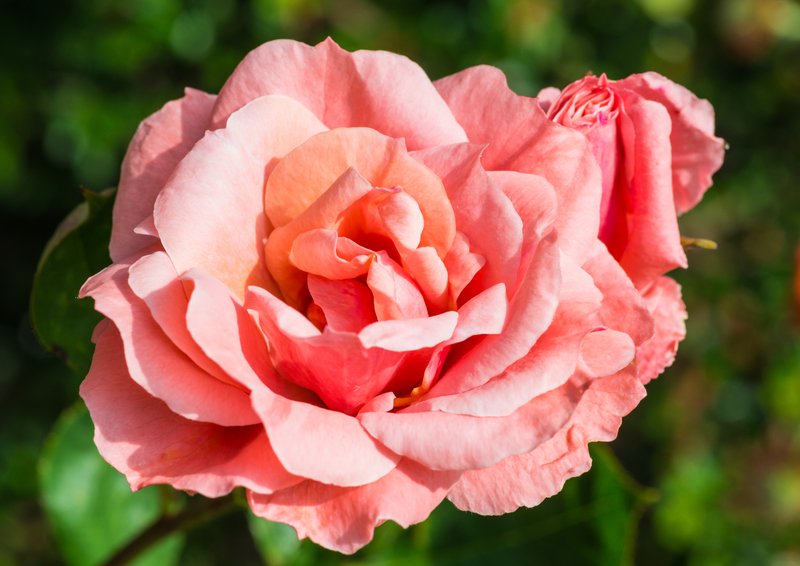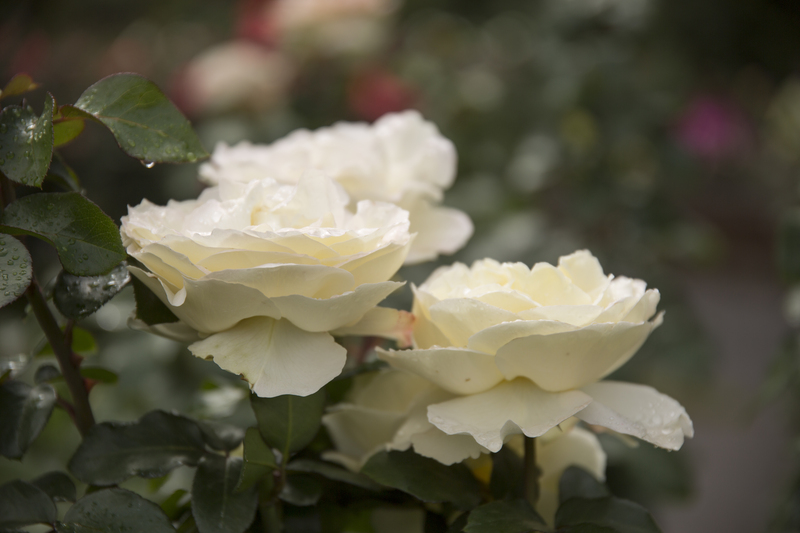Your Garden's Best Defense: 3 Critical Weed Control Tips
Posted on 15/08/2025
Your Garden's Best Defense: 3 Critical Weed Control Tips
Every gardener dreams of a lush, vibrant garden blooming with healthy, thriving plants. But weeds - those persistent, unwanted invaders - often threaten to undermine your hard work and love for gardening. Weed control isn't just about keeping your garden looking tidy; it's crucial for the health and success of your chosen plants. In this comprehensive guide, you'll discover three critical weed control strategies to protect and transform your outdoor spaces.

Why Effective Weed Control Matters for Your Garden
Weeds are more than mere nuisances. They compete fiercely with your favorite flowers, vegetables, and shrubs for resources like sunlight, water, and nutrients. Left unchecked, they can:
- Diminish plant health and growth by depriving roots of vital resources
- Harbor pests and diseases that may spread to your plants
- Create unsightly garden beds, reducing curb appeal
- Proliferate rapidly if left unmanaged, making future control much harder
This makes a strategic approach to weed management essential. Read on for the three most effective and sustainable weed control methods to safeguard your garden's beauty - and your hard work.
3 Critical Weed Control Tips to Protect Your Garden
1. Prevent Weeds Proactively with Mulching Techniques
If you're looking for a weed prevention strategy that's both eco-friendly and highly effective, look no further than mulching. Mulch acts as a physical barrier, blocking sunlight and making it much harder for unwanted plants to take hold in your soil.
Why Mulch Works for Weed Suppression
- Reduces soil exposure to sunlight, impeding germination
- Maintains soil moisture and temperature, creating unfavorable conditions for many weed species
- Adds organic matter to your garden as it breaks down (when using organic mulch materials)
How to Apply Mulch Properly:
- Clear the Area: Remove existing weeds by hand or with a weeding tool before applying mulch.
- Choose the Right Mulch: Opt for organic mulches like shredded leaves, straw, grass clippings, or wood chips to enhance the soil, or inorganic options like gravel or landscape fabric for more permanent solutions.
- Apply Generously: Spread a 2-4 inch thick layer around plants and across bare soil. Leave a gap around stems to prevent rot.
- Replenish Annually: Top up mulch as needed each season to maintain its effectiveness for weed control.
Mulching not only keeps weeds at bay but also improves your soil's overall health and appearance. It's a must-have tool in any gardener's arsenal!
2. Practice Consistent Manual and Mechanical Weed Removal
Even the best mulch or barrier can't prevent all weeds from appearing. That's why regular weed removal - by hand or with tools - remains central to keeping your garden weed-free.
Hand Weeding Tips for Maximum Effectiveness
- Act Early: Remove weeds while they're young, before they develop deep roots or set seeds.
- Weed After Rain: Moist soil makes it easier to pull entire roots, preventing regrowth.
- Use the Right Tools: Hand trowels, dandelion diggers, or specialized weeders help you get roots out completely.
- Dispose Properly: Avoid leaving uprooted weeds on the ground; some can reroot or drop seeds. Compost only seedless, non-invasive weeds.
Mechanical Weeding Solutions
- Hoeing: Shallow hoeing disrupts young weeds in veggie beds or paths.
- Weed Trimmers/Cultivators: For larger garden areas, mechanical cultivators efficiently remove weeds without major soil disturbance.
Remember: Persistence pays off. By removing weeds regularly and completely, you drastically reduce the number of mature, seed-producing plants in your garden, curbing future outbreaks.
3. Use Smart Planting & Barrier Strategies for Long-Lasting Weed Control
Preventing weeds from ever taking hold is possible with smart garden design and barrier techniques. Here's how you can stack the odds in your favor:
Plant Densely and Choose Groundcovers
- Dense Planting: Fill beds with your chosen plants so little bare soil remains. This minimizes space for weeds to sprout.
- Groundcovers: Use vigorous, low-growing plants (like creeping thyme, ajuga, or vinca) that spread quickly, shading the soil and outcompeting weeds naturally.
Landscape Fabrics and Edging
- Landscape Fabric: Install permeable weed barrier fabric before planting decorative beds or under stone paths. Cut holes for plants; cover with mulch for best results.
- Physical Edging: Create borders with edging materials (metal, plastic, or stone) around beds to keep invasive grasses and weeds from creeping in from lawns or wild areas.
Bonus Tip: For vegetable gardens, consider crop rotation and interplanting with fast-growing "living mulches" that shade soil and disrupt weed cycles.
Extra Strategies for Advanced Weed Control
Chemical Weed Control: Use With Caution
While hand, mechanical, and organic barriers form the foundation of smart weed management, some gardeners consider herbicides for tough or large-scale infestations. If you choose to go this route:
- Always follow the label directions to avoid harming desirable plants or the environment.
- Use targeted applications, not broad sprays, to minimize impact.
- Consider organic or OMRI-listed products if growing edibles or prioritizing wildlife safety.
Soil Solarization for Persistent Weeds
- During hot months, cover affected beds with clear plastic sheets for 4-6 weeks. The sun's heat will kill weed seeds and soil pathogens.
- This method is labor-intensive but highly effective for prepping new beds or reclaiming weedy areas for future planting.
Regular Garden Maintenance Is Key
- Walk your garden weekly and remove any new weeds before they gain a foothold.
- Clean up plant debris in fall to eliminate overwintering weed seeds and pests.
- Keep lawn edges trimmed and inspect fence lines for invasives trying to breach your barriers.

Frequently Asked Questions About Weed Control
What is the most effective way to control weeds?
The most effective method is a multilayered approach: using mulch to block seeds, removing weeds when young, and planting densely with ground covers or through landscape fabric. Relying on only one technique often leads to weed resilience or regrowth.
How often should I weed my garden?
Weekly inspections and early removal offer the best results. Waiting too long allows weeds to flower and set seed, dramatically increasing your future workload.
Is pulling weeds by hand enough?
Hand-pulling works, especially in smaller gardens, but isn't enough for larger beds or rampant weed problems. Combine it with mulching and barriers for long-term weed management success.
Are chemical herbicides safe for my garden?
When used responsibly, selective herbicides can address challenging weeds, but should be a last resort. Always prioritize manual and preventative methods for the health of your soil, beneficial insects, and pets.
Does boiling water or vinegar really kill weeds?
Both methods can kill small weeds on driveways or in cracks, but are not practical (or safe for adjacent plants) in garden beds. Physical removal remains best.
Conclusion: Make Weed Control a Regular Part of Your Garden Care Routine
Every thriving garden is the result of consistent, thoughtful care. By --
- Applying generous layers of mulch
- Hand-pulling or hoeing weeds before they get established
- Strategically using plant density, groundcovers, and barriers
-- you can enjoy a healthier, more beautiful, weed-free landscape all season long. Your garden's best defense against weeds is a proactive, sustainable, and effective weed control system.
Remember, weed control isn't a one-time event but a continuous process that pays off with flourishing flowers, productive vegetables, and the peace of mind that you're giving your plants their best chance to shine.
Start implementing these critical weed control tips today and watch your garden thrive!

